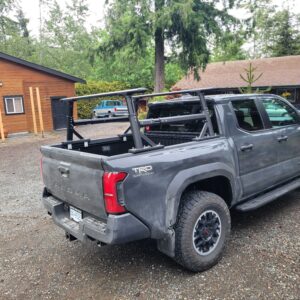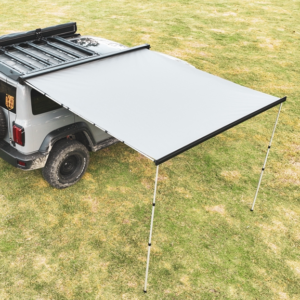Roof top tents can elevate your outdoor experiences, and we recognize they aren’t for everyone. This guide will help you decide if a rooftop tent is right for you. We’ll start by seeing if it matches your camping style. If it does, we’ll highlight the key features to look for. Because rooftop tents are a significant purchase, we want to ensure you’re confident in your decision.
What is a Roof Top Tent?
A roof top tent is a tent that attaches to the roof of your vehicle, providing a unique and elevated camping experience. Unlike traditional ground tents, roof top tents are designed for quick and easy setup, making them ideal for spontaneous adventures.
Why are Roof Top Tents SO POPULAR?
- Quick to Set Up: Roof top tents can be opened and packed away within minutes. No need to deal with poles and stakes; just unfold the tent, and you’re ready. This means more time for exploring and less time setting up camp.
- Comfort: Most rooftop tents come with built-in mattresses, which are more comfortable than blow-up mattresses (especially a deflated one!). With the bedding inside the tent, you can jump in as soon as it’s opened. Plus, the tent’s flat floor eliminates the discomfort of knobby stones poking your back at night.
- Keeps You Clean and Dry: These tents keep you elevated and away from mud, snow, sand, and critters.
- Weather Resistant: The materials used for rooftop tents are often designed to withstand harsh weather conditions better than ground tents.

Why a Roof Top Tent Might Not Be for You?
- Frequent Vehicle Changes: If you switch between different overlanding vehicles often, the setup and removal process of the tent can be tedious and time-consuming.
- Fuel Efficiency Concerns: Although roof top tents are becoming more streamlined, they still affect your vehicle’s aerodynamics, increasing drag and impacting gas mileage or battery usage.
- Mobility Issues: If you have trouble with stairs, a roof top tent may not be ideal, as you’ll need to climb stairs to access the tent.
- Additional Accessories Needed: You will need to buy a compatible roof rack for your car to install the roof top tent. Not all racks work with all tents, so this is an important consideration.

Key Features to Consider Before Purchasing a Roof Top Tent
After deciding that a roof top tent is right for you, we are thrilled for you! We know the benefits they bring and are excited for you to experience a luxurious outdoor adventure. But before you make your purchase, it’s important to understand the key features to consider. Here are the details to look at:
1. Rack Compatibility
Not all racks are suitable for roof top tents. The crossbars that come standard on many vehicles are usually rated for around 100 pounds, which isn’t enough for a roof top tent. Avoid aftermarket clamp-style rack systems that attach between the car door and roof, as these can put too much weight on specific points and potentially damage your vehicle. For safe mounting, you need a track system that distributes weight evenly across the roof, along with sturdy towers and crossbars rated for the proper weight.
2. Tent Styles: Soft-Shell vs Hard-Shell
Roof top tents come in two main types: softshells and hardshells. Softshell tents are compact when travelling and have durable covers. They unfold over the side or back of your vehicle and usually take a bit more time to set up. Using accessories like awnings or rain flies with these tents can add to setup time. Hardshell tents, on the other hand, look like large cargo boxes when closed and extend vertically or at an angle when open. These often come fully assembled and are easy to install, with most of the setup work done by hydraulic pistons. These types of tents are usually more expensive than the soft-shell tents.
3. Tent Weight
The weight of the tent is crucial, especially if you have a smaller car. For larger trucks and SUVs, weight may be less of an issue. Remember, you’ll need to lift the tent onto your vehicle at some point. If you plan to do this often, even an extra 20 or 30 pounds can make a big difference.
4. Seasonal Suitability
Consider the type of weather you’ll be camping in. If you’re heading to a hot location like Moab in July, you won’t need the same type of tent as someone camping in cooler, wetter climates like the Cascades in April. Breathability is essential in high temperatures, so a thick canopy might not be ideal for hot days. For versatile use in various weather conditions, a 4-season model is recommended.
5. Installation Process
Installing a roof top tent can be more challenging than expected. Depending on the height of your vehicle and the weight of the tent, you may need help. Fortunately, many manufacturers provide detailed installation instructions. Make sure you’re prepared for the task, especially if your vehicle is tall or your tent is heavy.
6. Off-Season Storage
If your tent isn’t a permanent fixture on your vehicle, you’ll need a plan for storage during the off-season or between trips. Some hoist systems can store your tent suspended in a garage or storage facility. Ensure your hoist is designed for the tent’s weight, especially for long-term storage. If storing it on the floor, take precautions to protect it from damage.
7. Available Accessories
For a comfortable camping experience, consider the available accessories for your roof top tent. These can include internal shelves, LED lights, boot bags, deluxe mattresses, interchangeable canopies, as well as awnings, blankets, sleeping bags, and pillows. Some tents come with included accessories, while others charge extra for upgrades. Choose a tent that offers the features and accessories that best suit your needs.









